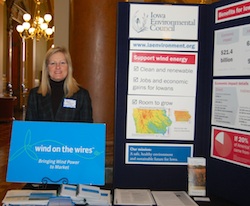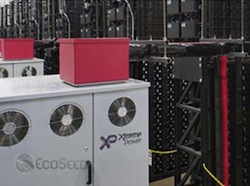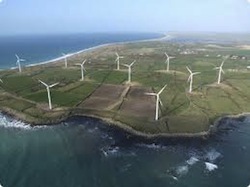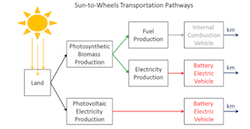Sweetwater Energy has announced a 15-year commercial agreement with Front Range Energy to produce cellulosic ethanol at Front Range’s current corn ethanol facility located in Weld County, Colorado. Sweetwater will install its process to convert local biomass, such as crop residues, energy crops, and woody biomass, into sugar that will then will converted to ethanol.
 “It’s very exciting to be an early adopter of Sweetwater’s technology and to bridge that gap from grain to cellulosic ethanol,” said Dan Sanders Jr., Vice President of Front Range Energy. “Supplementing our corn with this sugar allows us to displace some of the volatility of the corn market, with the goal of moving a higher and higher percentage of our production to cellulosic. We’ve had great success fermenting Sweetwater’s sugar, and from a business standpoint, we have great confidence in Sweetwater’s management team.”
“It’s very exciting to be an early adopter of Sweetwater’s technology and to bridge that gap from grain to cellulosic ethanol,” said Dan Sanders Jr., Vice President of Front Range Energy. “Supplementing our corn with this sugar allows us to displace some of the volatility of the corn market, with the goal of moving a higher and higher percentage of our production to cellulosic. We’ve had great success fermenting Sweetwater’s sugar, and from a business standpoint, we have great confidence in Sweetwater’s management team.”
Sweetwater will place one of its cellulosic facilities near the Front Range site and will deliver enough refined monomeric sugar for Front Range to produce up to 3.6 million gallons of ethanol per year during the initial phase. As the project ramps up, economics will ultimately determine the pace and volume with which Front Range’s corn ethanol facility will migrate to Sweetwater’s cellulosic feedstocks.
 “To say we’re enthusiastic about this relationship with Dan and the whole Front Range team is an understatement,” said Arunas Chesonis, Chairman and CEO of Sweetwater. “They’re a progressive team looking to stay ahead of the curve, and that’s a very rewarding mindset to have in a company you’ll be working with for the next 15 years. We’re going to kick this off by replacing about 7 percent of the corn currently processed, and as our partnership grows and we see how well both parties are benefiting from the cellulosic ethanol production, we’ll increase the amount of cellulosic material and really open up the cellulosic markets to Front Range.”
“To say we’re enthusiastic about this relationship with Dan and the whole Front Range team is an understatement,” said Arunas Chesonis, Chairman and CEO of Sweetwater. “They’re a progressive team looking to stay ahead of the curve, and that’s a very rewarding mindset to have in a company you’ll be working with for the next 15 years. We’re going to kick this off by replacing about 7 percent of the corn currently processed, and as our partnership grows and we see how well both parties are benefiting from the cellulosic ethanol production, we’ll increase the amount of cellulosic material and really open up the cellulosic markets to Front Range.”
In December 2012, Sweetwater was awarded a patent for the manufacture and deployment of distributed pretreatment units designed for the extraction of sugars from any cellulosic feedstock for the production of ethanol.









 In this edition of the Ethanol Report, Dinneen talks about how the petroleum industry is very afraid of the potential of cellulosic biofuels to take over a greater percentage of the gasoline market. “They’re not happy about having lost 10% of the barrel,” Dinneen says. “They are apoplectic about the potential of losing even more of it to cellulosic ethanol and other biofuels.”
In this edition of the Ethanol Report, Dinneen talks about how the petroleum industry is very afraid of the potential of cellulosic biofuels to take over a greater percentage of the gasoline market. “They’re not happy about having lost 10% of the barrel,” Dinneen says. “They are apoplectic about the potential of losing even more of it to cellulosic ethanol and other biofuels.”
